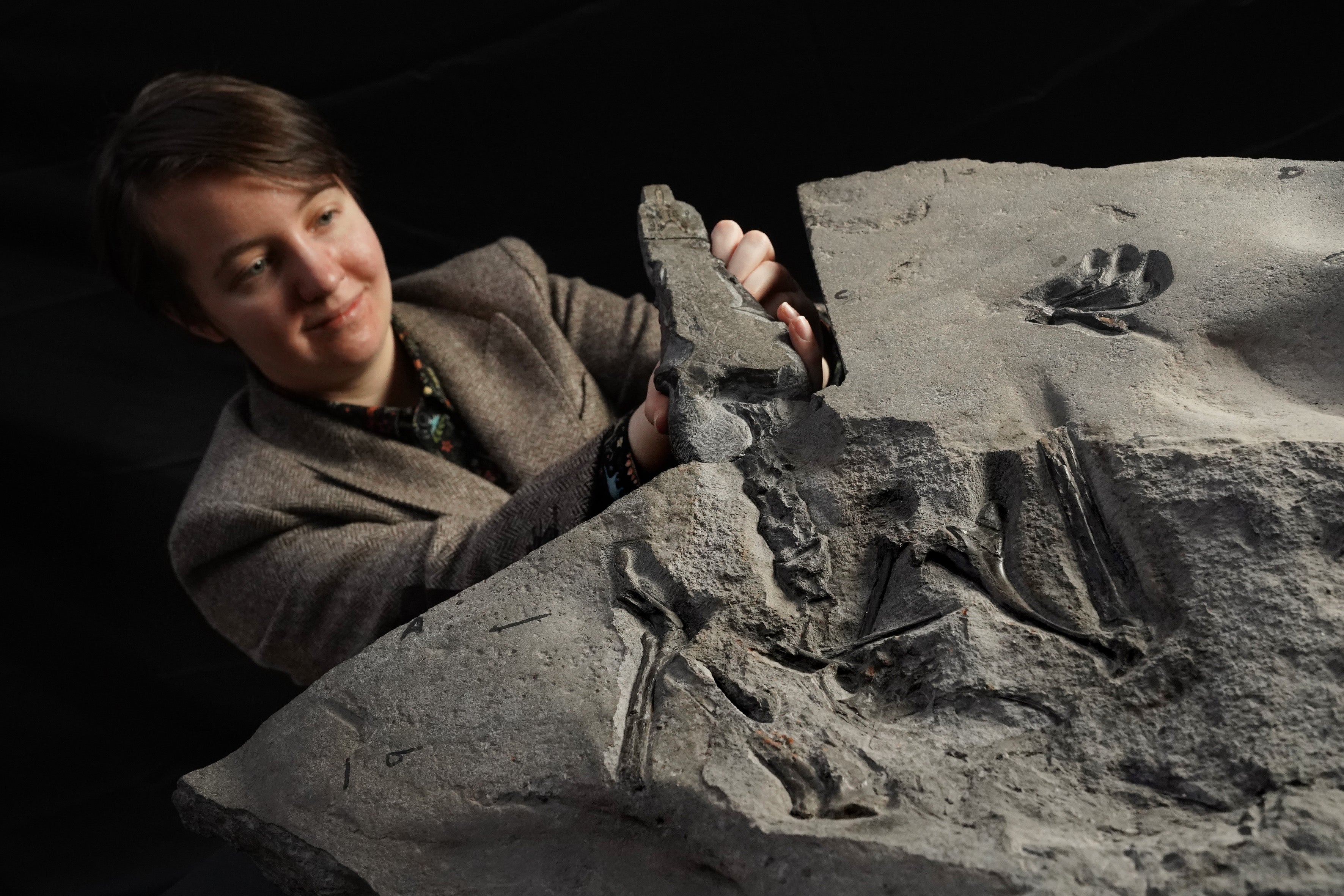Fossil of world’s largest Jurassic flying reptile unearthed in Scotland in ‘discovery of the century’
PhD student spotted the pterosaur’s jaw in a layer of ancient limestone on Isle of Skye

Your support helps us to tell the story
From reproductive rights to climate change to Big Tech, The Independent is on the ground when the story is developing. Whether it's investigating the financials of Elon Musk's pro-Trump PAC or producing our latest documentary, 'The A Word', which shines a light on the American women fighting for reproductive rights, we know how important it is to parse out the facts from the messaging.
At such a critical moment in US history, we need reporters on the ground. Your donation allows us to keep sending journalists to speak to both sides of the story.
The Independent is trusted by Americans across the entire political spectrum. And unlike many other quality news outlets, we choose not to lock Americans out of our reporting and analysis with paywalls. We believe quality journalism should be available to everyone, paid for by those who can afford it.
Your support makes all the difference.An extremely rare fossil of a pterodactyl – a huge flying reptile from the Jurassic period – has been unveiled at the National Museum of Scotland five years after it was first discovered by a student.
The pterosaur, as it is officially called, had a wingspan of around 2.5m and lived more than 170 million years.
Scientists dealing with the prehistoric specimen have hailed it as the best-preserved pterosaur skeleton since the early 1800s, when palaeontologist Mary Anning was celebrated for her Jurassic findings.
The fossil, which was discovered during a National Geographic Society-funded excavation on the Isle of Skye in 2017, has only now been added to the museum’s collection.
PhD student Amelia Penny made the find on the trip, led by the University of Edinburgh’s Prof Steve Brusatte, after she spotted its sharp-toothed jaw in a layer of ancient limestone on Skye’s coast.
A painstaking operation then ensued to extract the fossil, led by Dugald Ross of Staffin Museum, involving the use of diamond-tipped saws to cut it from the rock.
Examination of the skeleton followed, at the University of Edinburgh, with the team’s findings now published in the Current Biology journal.
The research, led by fellow PhD student Natalia Jagielska, revealed the creature was a species new to science. CT scans also revealed the giant-winged animal had large optic lobes, indicating good eyesight.

It has since been given the Gaelic name Dearc sgiathanach (pronounced Jark ski-an-ach), which translates as “winged reptile”, and also references the Isle of Skye, whose Gaelic name means “the winged isle”.
“The finding has pieced together a huge gap in fossil records for us,” Ms Jagielska told the PA news agency.
“Britain hasn’t seen this kind of preservation of pterosaurs in 200 years. It’s a discovery of the century, this doesn't really happen.”
Recalling the trip, Prof Brusatte, who is chair of palaeontology and evolution at the university, added: “This is a superlative Scottish fossil.
“Dearc is the biggest pterosaur we know from the Jurassic period and that tells us that pterosaurs got larger much earlier than we thought, long before the Cretaceous period when they were competing with birds, and that’s hugely significant.”
The unique fossil has now been added to the National Museum of Scotland’s collection and will be studied further, including by Ms Jagielska who intends to reveal more about Dearc’s behaviour – particularly how it lived and flew.
Additional reporting by PA
Join our commenting forum
Join thought-provoking conversations, follow other Independent readers and see their replies
Comments